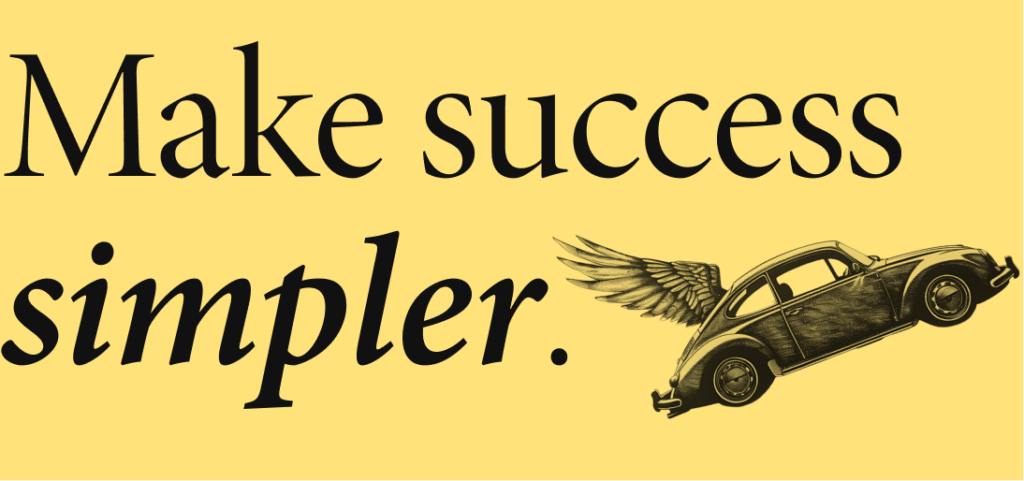Welcome to One Thing Better. Each week, the editor in chief of Entrepreneur magazine (that’s me) shares one way to be more successful and satisfied — and build a career or company you love.
Today’s one thing: Putting something out there.
That one thing, better: Making people come back for more.

If you’ve ever wanted to…
- Build a personal brand
- Be the go-to person at work
- Grow a newsletter or podcast
- Get repeat business of any kind
… then I have an important formula for you to follow.
It’s a balance of two things — and although it may sound simple at first, getting it right is critical to your success.
How do I know? Because this is the formula I’ve used to grow this newsletter, along with everything else I make. And it works.
Today, I’ll give it to you. But first, I’ll tell you about an entrepreneur who got it all wrong.
The imperfect balance.
I recently met an entrepreneur I’ll call Beth. She’s a nutrition coach, and is struggling to get new clients. She spends a lot of time marketing on social media, so I looked at her Instagram page. And it’s a mess!
Her feed is full of nutrition advice, which is good… along with posts about politics, real estate, crypto, and more.
“Why are you posting all this other stuff?” I asked her.
“Because I’m interested in many things,” she explained. “I want people to know about everything I care about.”
You may want to rethink that, I told her.
Then I explained my theory on how to create great media:
You must strike the perfect balance of predictability and surprise.
Let’s break that down.
Use yourself as a case study: Why do you subscribe to a podcast, follow someone on social media, or regularly read a publication?
Do you do this at random? No! You decide that something has specific additive value to your life, and then you come back for more of it. In other words, you want it to be very predictable.
But there’s a twist: The best stuff is also surprising. Within the confines of predictability, you want something that delights, informs, or inspires you in new ways.
Predictability and surprise. It means getting a new version of something you already want.
As a consumer, you respond well to this balance. As a creator, your job is to strike this balance in everything you do.
When I write this newsletter, for example, I’m always thinking about…
Predictability: In a general sense, readers know what this newsletter will be — a thoughtful, strategic, often personal approach to work, and always written in the same style. My job is to deliver that each week.
Surprise: Readers don’t know what my newsletter will actually say each week — and my job is to offer something they hadn’t thought of.
Now, a warning:
This balance is easy to mess up.
Predictability and surprise are not inherently good things.
For example, I could write a repetitive newsletter or recycle other people’s ideas — which would be predictable, but too predictable. Or I could suddenly make this a newsletter about celebrities’ dating lives — which would be a surprise, but too surprising.
(Don’t worry, I have zero thoughts on celebrities’ dating lives.)
Too much predictability is boring. Too much surprise is disorienting or off-putting. You have to get the balance right.
Join the conversation. Upgrade now!
This was Beth’s mistake: By posting about nutrition and politics and crypto and whatever, she was creating constant surprise with no predictability. There was no reason for someone to follow her, unless they happen to appreciate her unique set of interests.
Now here’s the greatest part: This balance doesn’t just apply to media. Once you appreciate its power, you can start applying it to basically every part of your life…
Where else to strike this balance
Think about why you like someone — maybe as a friend, a colleague, a business partner, a romantic partner, or some combination of those things. I don’t judge!
Why do you like them? Because they provide something you value. Maybe it’s great advice. Or insights. Or fun. Or comfort. Whatever it is, they do it reliably — and always give you something new to remember.
This is predictability and surprise.
Now think about the brands you’ve stuck with the longest — buying its products for years, recommending it to others, feeling all the brand loyalty you’ve ever felt.
You always know what you’ll get from this brand. Maybe you love the quality. Or reliability. Or price. Or vibe. And it keeps rolling out new products, updates, or flavors that make your life better.
This is also predictability and surprise.
You can create this in all parts of your life. Just be more intentionally predictable and surprising with everyone around you — in your role at work, in the things you make, in the relationships you have.
To start, ask yourself two questions:
1. Where do people want me to be predictable?
Which is to say: What do they expect or want from you? What role do you play in their lives?
2. Where do people want me to be surprising?
Which is to say: What’s your unique value — and how can you do that within the confines of predictability? Maybe it’s your ability to create interesting things, communicate in surprising ways, or understand your audience’s needs.
Here’s another way of saying it:
Whenever you make something, and whenever you interact with others, you are setting a precedent. You are saying: This is what I do. And if what you do is valuable to others, then they’ll want more of it.
Once that happens, you have an incredible opportunity — because now people are waiting. Now they want more. You have a responsibility to deliver. But you cannot get lazy about it. You cannot just do the same thing every time, forever.
That’s because, once they trust you, they want to follow you. To discover the great new places you’ll lead them. So you must think big. Think bold. Stretch your ideas and talents and strengths. Give them what they want, in a way that only you can.
Be predictable. Be surprising.
That’s how to do one thing — or really, two things — better.
